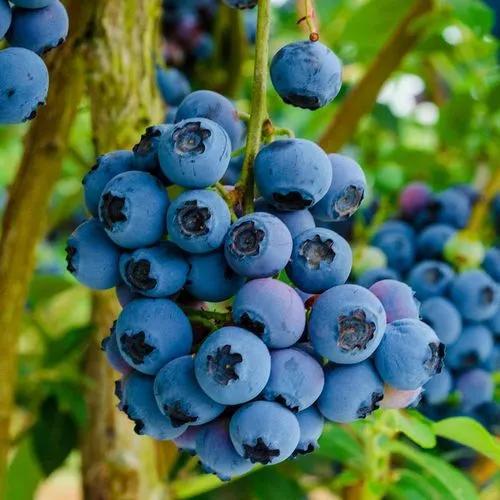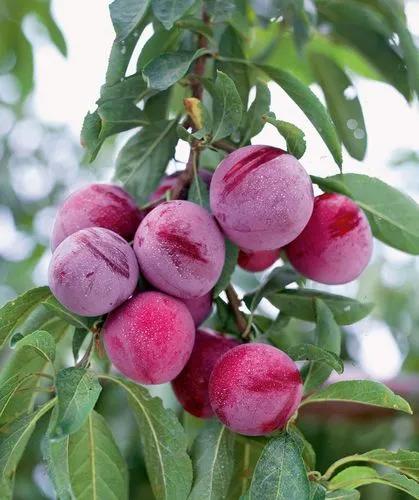Lycium barbarum is a deciduous woody shrub, growing 1–3 metres (3 ft 3 in–9 ft 10 in) high. The shrub has weak arching branches, and the side branches are often reduced to short leafless spines. L. barbarum leaves form on the shoot either in an alternating arrangement, or in bundles of up to three. Each leaf is green, scarcely fleshy when fresh, usually lanceolate (spearhead-shaped), sometimes with rounded tips. Clustered leaves are up to 25 mm long; the single alternate leaves are up to 55 mm long. The flowers grow in groups of one to three in the leaf axils, with pedicels 6–15 mm long. The calyx, eventually ruptured by the growing berry, is a whitish tube crowned by five or six radial triangular sepals, shorter than the tube, 10–12 mm long and 3–4 mm wide, sometimes 2–lipped, strongly curved. The sepals are whitish on the lower side (facing towards the branch) and deep mauve on the top side. Each flower has five stamens, exserted for 3–8 mm, with stalks longer than the anthers. The pistil is 8–11.5 mm long. The anthers are longitudinally dehiscent. The fruit of L. barbarum, the main variety of goji berry, is a bright orange-red, ellipsoid berry 1–2 cm (0.39–0.79 in) in diameter. The fruiting calyx is split deeply once or twice. The number of seeds in each berry varies widely based on cultivar and fruit size, ranging from 10 to 60. The seeds are about 2 mm long, 1 mm wide, yellowish, compressed with a curved embryo. The plants are self-pollinating, but may be cross pollinated by insects.[citation needed] The species is dispersed into natural areas by birds and other animals that eat its fruit. In the Northern Hemisphere, flowering occurs from June through September and berry maturation from August to October, depending on the latitude, altitude, and climate. Where frost does not occur fruiting is continuous and plants do not lose their leaves.
Matrimony Vine Care
Lycium Barbarum
Other names: Wolfberries



How to Care for the Plant

Water

Water as needed to keep the potting mix lightly moist, but never soggy

Pruning

Prune in early spring, then trim lightly to keep the plant neat and tidy throughout the growing season.

Fertilizer

Fertilize the plant occasionally, but don’t overfeed or you’ll have lush growth and no blooms or berries.

Sunlight

While the plant prefers full sunlight, it tolerates partial shade.

Soil

Matrimony vine grows in any type of well-drained soil.

Temperature

Plants are hardy to about -15°c

Additional

Although no records of toxicity have been seen, some caution should be exercised with this species, particularly with regard to its edible leaves, since it belongs to a family that often contains toxins. However, use of the leaves is well documented and fairly widespread in some areas. The unripe fruit might also be suspect though the ripe fruit is wholesome.

Popularity

418 people already have this plant 38 people have added this plant to their wishlists
Discover more plants with the list below
Popular articles






